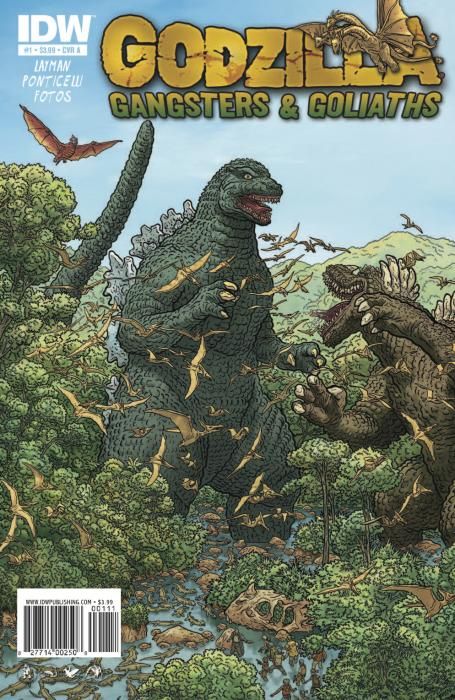This comic feels like a newly-discovered 1960s Godzilla movie that was buried and somehow lost between classics like "Destroy All Monsters," "Godzilla vs. the Sea Monster," and "All Monsters Attack." John Layman catches the mystique, terror, and humanistic connection that those old films so successfully exude. Rather than saddle the reader with Kenny, that boy who dressed like a Fisher Price Little People character, Layman gives us the entry character of Detective Sato. Layman's Sato has some of the sense of wonder that Kenny (or a similar character) would bring to the Godzilla movies of yesteryear, but that sense of wonder is tinged with the tragedy surrounding the character.
The story in this comic draws some interesting parallels between the monsters of imagination who reside on Monster Island with names like "Godzilla" and "Mothra" and those in the everyday lives of the characters in this book as Detective Makoto Sato must figure out a way to stop his foe (and massive crimelord) Takahashi before Takahashi crushes Sato's family like Godzilla would straw huts. Layman plays this metaphor to a perfect pitch, giving this comic book that much more credibility.
IDW is making a really strong push to make the Godzilla brand a successful, recognizable, and enjoyable line of books. In offering more than one story about a protagonist/antagonist who cannot even offer up a thought balloon, they run the risk of telling the same (or dreadfully similar) story in two places, but this book is much different from what is being offered up over in "Godzilla: Kingdom of Monsters." That book is building up the kaiju, inserting them into the world and this title - at least this first issue of this five-issue title - is taking the story into the world of the kaiju. That's right; this book is going straight to Monster Island.
Alberto Ponticelli's art is filled with detail and strong on design. The monsters - human and otherwise - all have recognizable features and remain distinct throughout the issue. Ponticelli varies his panel arrangement and page layout to give the comic a sense of motion throughout, filling some panels with massive amounts of detail and leaving other panels to Jay Fotos' coloring. Fotos varies his palette to reflect the action and mood of the scenes. Panels with Sato trend towards grays and browns, accented by greens, but the action and kaiju flare up on the page in bursts of color that are as critical to this story as the figures in motion.
Sato goes from the company of one type of monster to that of another. In doing so, he finds his own morals stretched and might just possibly be on the verge of becoming a monster himself.

